- Mobile Site
- Staff Directory
- Advertise with Ars

Filter by topic
- Biz & IT
- Gaming & Culture
Front page layout
Hope returns —
Nasa knows what knocked voyager 1 offline, but it will take a while to fix, "engineers are optimistic they can find a way for the fds to operate normally.".
Stephen Clark - Apr 6, 2024 12:28 am UTC
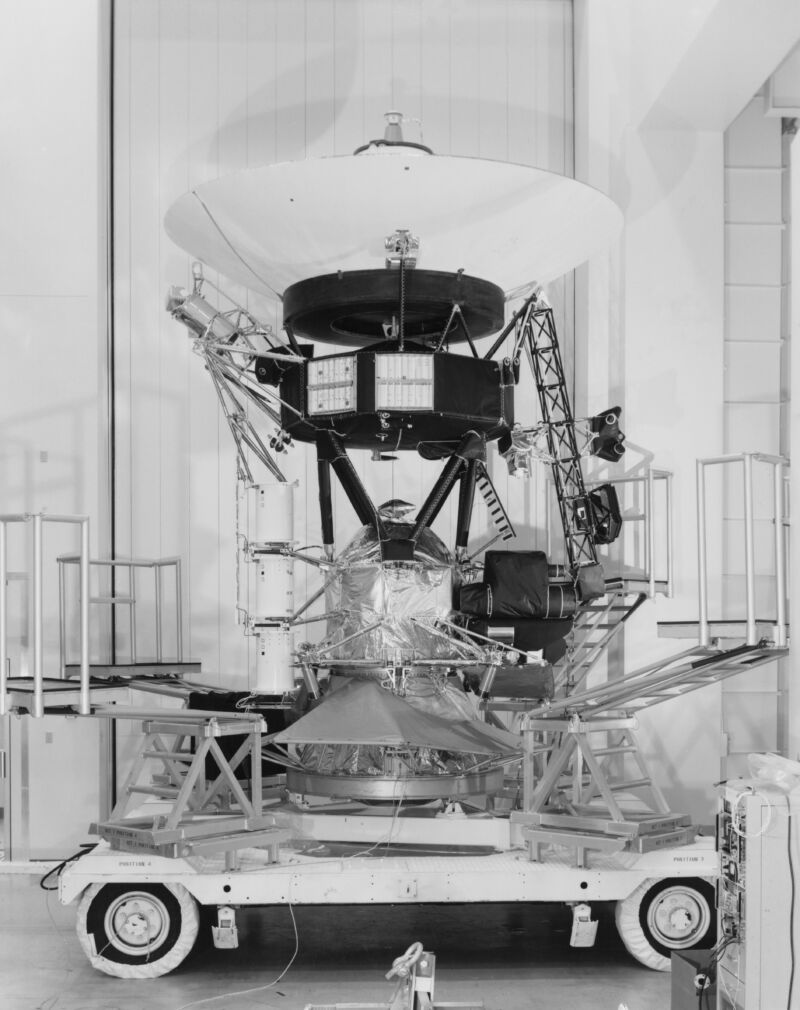
Engineers have determined why NASA's Voyager 1 probe has been transmitting gibberish for nearly five months, raising hopes of recovering humanity's most distant spacecraft.
Voyager 1, traveling outbound some 15 billion miles (24 billion km) from Earth, started beaming unreadable data down to ground controllers on November 14. For nearly four months, NASA knew Voyager 1 was still alive—it continued to broadcast a steady signal—but could not decipher anything it was saying.
Confirming their hypothesis, engineers at NASA's Jet Propulsion Laboratory (JPL) in California confirmed a small portion of corrupted memory caused the problem. The faulty memory bank is located in Voyager 1's Flight Data System (FDS), one of three computers on the spacecraft. The FDS operates alongside a command-and-control central computer and another device overseeing attitude control and pointing.
The FDS duties include packaging Voyager 1's science and engineering data for relay to Earth through the craft's Telemetry Modulation Unit and radio transmitter. According to NASA, about 3 percent of the FDS memory has been corrupted, preventing the computer from carrying out normal operations.
Optimism growing
Suzanne Dodd, NASA's project manager for the twin Voyager probes, told Ars in February that this was one of the most serious problems the mission has ever faced. That is saying something because Voyager 1 and 2 are NASA's longest-lived spacecraft. They launched 16 days apart in 1977, and after flying by Jupiter and Saturn, Voyager 1 is flying farther from Earth than any spacecraft in history. Voyager 2 is trailing Voyager 1 by about 2.5 billion miles, although the probes are heading out of the Solar System in different directions.
Normally, engineers would try to diagnose a spacecraft malfunction by analyzing data it sent back to Earth. They couldn't do that in this case because Voyager 1 has been transmitting data packages manifesting a repeating pattern of ones and zeros. Still, Voyager 1's ground team identified the FDS as the likely source of the problem.
The Flight Data Subsystem was an innovation in computing when it was developed five decades ago. It was the first computer on a spacecraft to use volatile memory. Most of NASA's missions operate with redundancy, so each Voyager spacecraft launched with two FDS computers. But the backup FDS on Voyager 1 failed in 1982.
Due to the Voyagers' age, engineers had to reference paper documents, memos, and blueprints to help understand the spacecraft's design details. After months of brainstorming and planning, teams at JPL uplinked a command in early March to prompt the spacecraft to send back a readout of the FDS memory.
The command worked, and Voyager1 responded with a signal different from the code it had been transmitting since November. After several weeks of meticulous examination of the new code, engineers pinpointed the location of the bad memory.
"The team suspects that a single chip responsible for storing part of the affected portion of the FDS memory isn’t working," NASA said in an update posted Thursday. "Engineers can’t determine with certainty what caused the issue. Two possibilities are that the chip could have been hit by an energetic particle from space or that it simply may have worn out after 46 years."
Voyager 1's distance from Earth complicates the troubleshooting effort. The one-way travel time for a radio signal to reach Voyager 1 from Earth is about 22.5 hours, meaning it takes roughly 45 hours for engineers on the ground to learn how the spacecraft responded to their commands.
NASA also must use its largest communications antennas to contact Voyager 1. These 230-foot-diameter (70-meter) antennas are in high demand by many other NASA spacecraft , so the Voyager team has to compete with other missions to secure time for troubleshooting. This means it will take time to get Voyager 1 back to normal operations.
"Although it may take weeks or months, engineers are optimistic they can find a way for the FDS to operate normally without the unusable memory hardware, which would enable Voyager 1 to begin returning science and engineering data again," NASA said.
reader comments
Channel ars technica.

We finally know why NASA's Voyager 1 spacecraft stopped communicating — scientists are working on a fix
N ASA engineers have discovered the cause of a communications breakdown between Earth and the interstellar explorer Voyager 1. It would appear that a small portion of corrupted memory exists in one of the spacecraft's computers.
The glitch caused Voyager 1 to send unreadable data back to Earth, and is found in the NASA spacecraft's flight data subsystem (FDS). That's the system responsible for packaging the probe's science and engineering data before the telemetry modulation unit (TMU) and radio transmitter send it back to mission control.
The source of the issue began to reveal itself when Voyager 1 operators sent the spacecraft a "poke" on March 3, 2024. This was intended to prompt FDS to send a full memory readout back to Earth.
The readout confirmed to the NASA team that about 3% of the FDS memory had been corrupted, and that this was preventing the computer from carrying out its normal operations.
Related: NASA finds clue while solving Voyager 1's communication breakdown case
Launched in 1977, Voyager 1 became the first human-made object to leave the solar system and enter interstellar space in 2012. Voyager 2 followed its spacecraft sibling out of the solar system in 2018, and is still operational and communicating well with Earth.
After 11 years of interstellar exploration, in Nov. 2023, Voyager 1's binary code — the computer language it uses to communicate with Earth — stopped making sense. Its 0's and 1's didn't mean anything anymore.
"Effectively, the call between the spacecraft and the Earth was still connected, but Voyager's 'voice' was replaced with a monotonous dial tone," Voyager 1's engineering team previously told Space.com .
The team strongly suspects this glitch is the result of a single chip that's responsible for storing part of the affected portion of the FDS memory ceasing to work.
Currently, however, NASA can’t say for sure what exactly caused that particular issue. The chip could have been struck by a high-speed energetic particle from space or, after 46 years serving Voyager 1, it may simply have worn out.
Voyager 1 currently sits around 15 billion miles (24 billion kilometers) from Earth, which means it takes 22.5 hours to receive a radio signal from it — and another 22.5 hours for the spacecraft to receive a response via the Deep Space Network's antennas. Solving this communication issue is thus no mean feat.
Yet, NASA scientists and engineers are optimistic they can find a way to help FDS operate normally, even without the unusable memory hardware.
Solving this issue could take weeks or even months, according to NASA — but if it is resolved, Voyager 1 should be able to resume returning science data about what lies outside the solar system.
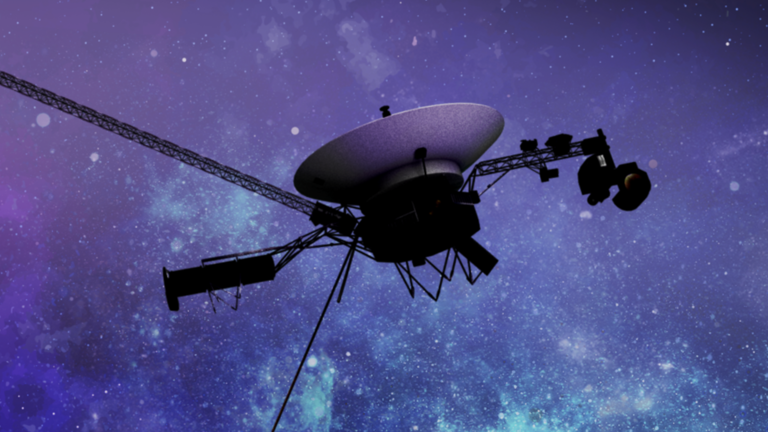

Suggested Searches
- Climate Change
- Expedition 64
- Mars perseverance
- SpaceX Crew-2
- International Space Station
- View All Topics A-Z
Humans in Space
Earth & climate, the solar system, the universe, aeronautics, learning resources, news & events.

NASA Receives 13 Nominations for the 28th Annual Webby Awards
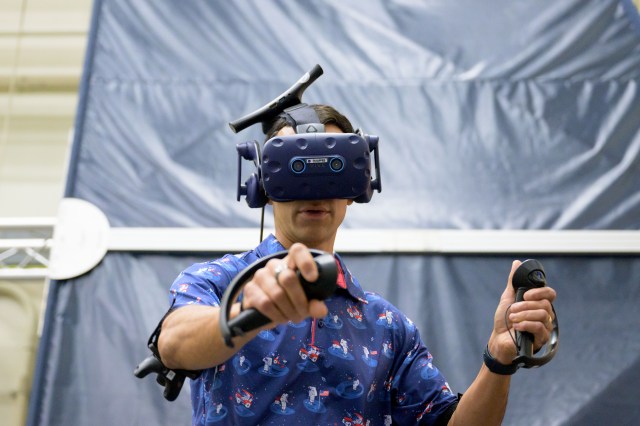
Through Astronaut Eyes, Virtual Reality Propels Gateway Forward

How NASA Spotted El Niño Changing the Saltiness of Coastal Waters
- Search All NASA Missions
- A to Z List of Missions
- Upcoming Launches and Landings
- Spaceships and Rockets
- Communicating with Missions
- James Webb Space Telescope
- Hubble Space Telescope
- Why Go to Space
- Astronauts Home
- Commercial Space
- Destinations
- Living in Space
- Explore Earth Science
- Earth, Our Planet
- Earth Science in Action
- Earth Multimedia
- Earth Science Researchers
- Pluto & Dwarf Planets
- Asteroids, Comets & Meteors
- The Kuiper Belt
- The Oort Cloud
- Skywatching
- The Search for Life in the Universe
- Black Holes
- The Big Bang
- Dark Energy & Dark Matter
- Earth Science
- Planetary Science
- Astrophysics & Space Science
- The Sun & Heliophysics
- Biological & Physical Sciences
- Lunar Science
- Citizen Science
- Astromaterials
- Aeronautics Research
- Human Space Travel Research
- Science in the Air
- NASA Aircraft
- Flight Innovation
- Supersonic Flight
- Air Traffic Solutions
- Green Aviation Tech
- Drones & You
- Technology Transfer & Spinoffs
- Space Travel Technology
- Technology Living in Space
- Manufacturing and Materials
- Science Instruments
- For Kids and Students
- For Educators
- For Colleges and Universities
- For Professionals
- Science for Everyone
- Requests for Exhibits, Artifacts, or Speakers
- STEM Engagement at NASA
- NASA's Impacts
- Centers and Facilities
- Directorates
- Organizations
- People of NASA
- Internships
- Our History
- Doing Business with NASA
- Get Involved
- Aeronáutica
- Ciencias Terrestres
- Sistema Solar
- All NASA News
- Video Series on NASA+
- Newsletters
- Social Media
- Media Resources
- Upcoming Launches & Landings
- Virtual Events
- Sounds and Ringtones
- Interactives
- STEM Multimedia

Altitude Chamber Gets Upgrade for Artemis II, Spacecraft Testing Begins
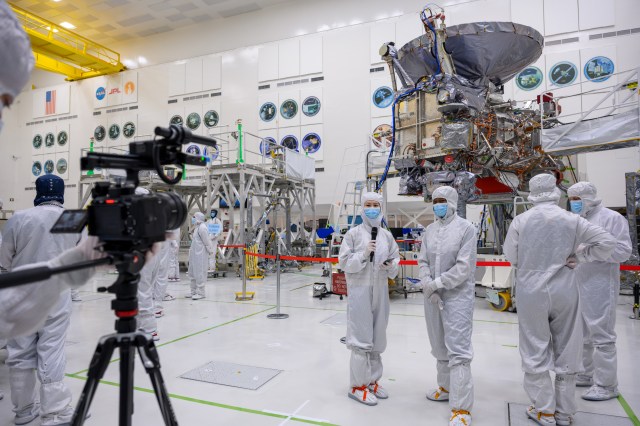
Media Get Close-Up of NASA’s Jupiter-Bound Europa Clipper

NASA’s PACE Data on Ocean, Atmosphere, Climate Now Available

NASA Shares Medical Expertise with New Space Station Partners

From NASA’s First Astronaut Class to Artemis II: The Importance of Military Jet Pilot Experience
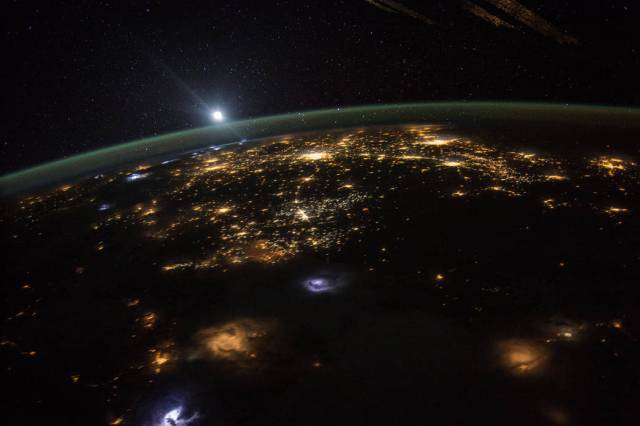
Commercial Space Frequently Asked Questions

NASA’s Lola Fatoyinbo Receives Royal Geographical Society Prize

More Than 36,000 Volunteers Helped Do NASA Eclipse Science

NASA Names Finalists of the Power to Explore Challenge

NASA’s TESS Temporarily Pauses Science Observations
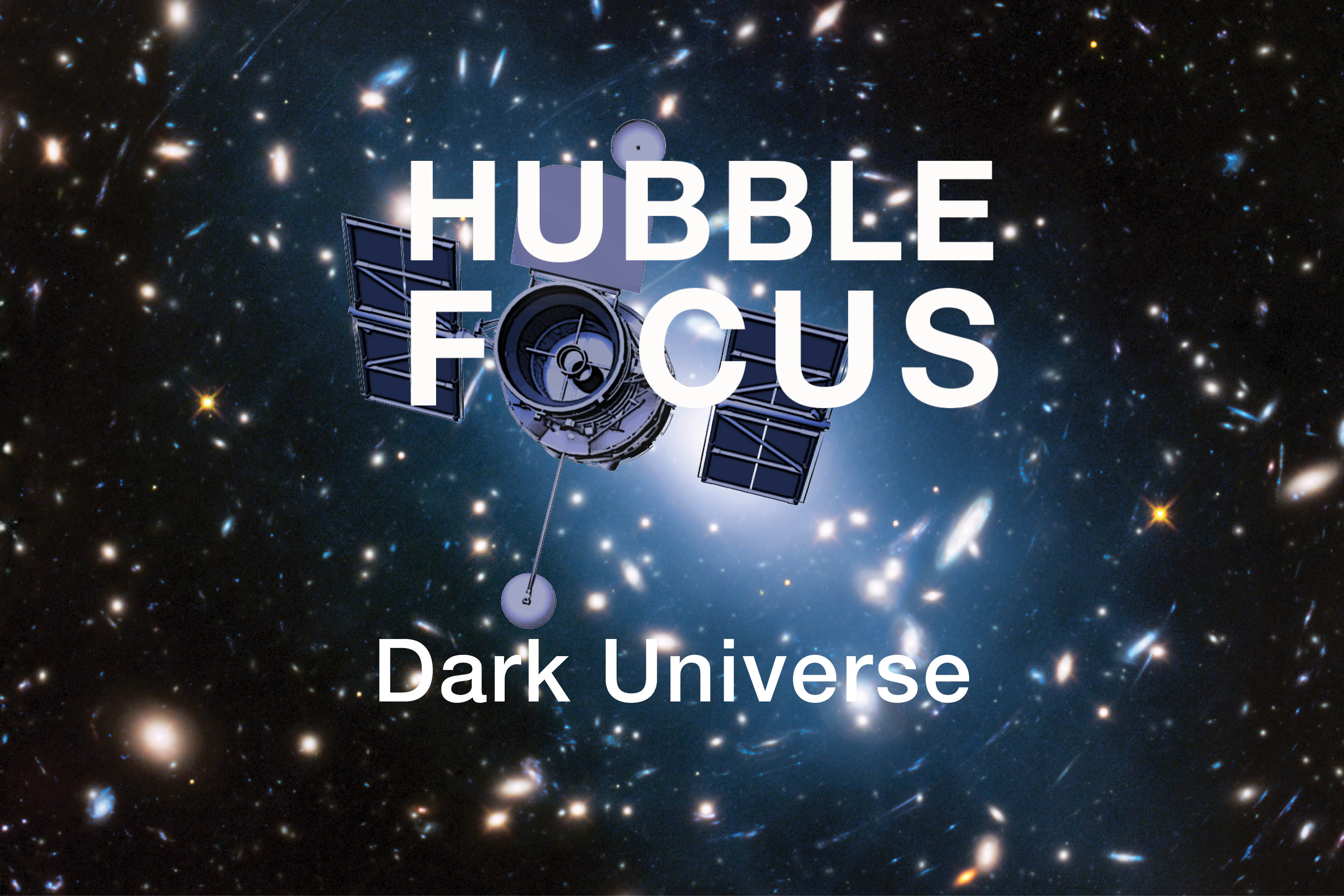
NASA’s New Hubble E-Book Spotlights Universe’s Best-Kept Dark Secrets

Accelerating Informatics for Earth Science

NASA Langley Team to Study Weather During Eclipse Using Uncrewed Vehicles

NASA Noise Prediction Tool Supports Users in Air Taxi Industry

ARMD Solicitations

NASA’s SERT II: ‘A Genuine Space Success Story’


Tech Today: Synthetic DNA Diagnoses COVID, Cancer

NASA Partnerships Bring 2024 Total Solar Eclipse to Everyone

Launch Week Event Details

La presentación del X-59 de la NASA personifica la tradición aeronáutica
Nasa voyager 1 probe encounters new region in deep space.

WASHINGTON – NASA’s Voyager 1 spacecraft has entered a new region at the far reaches of our solar system that scientists feel is the final area the spacecraft has to cross before reaching interstellar space. Scientists refer to this new region as a magnetic highway for charged particles because our sun’s magnetic field lines are connected to interstellar magnetic field lines. This connection allows lower-energy charged particles that originate from inside our heliosphere, or the bubble of charged particles the sun blows around itself, to zoom out and allows higher-energy particles from outside to stream in. Before entering this region, the charged particles bounced around in all directions, as if trapped on local roads inside the heliosphere. The Voyager team infers this region is still inside our solar bubble because the direction of the magnetic field lines has not changed. The direction is predicted to change when Voyager breaks through to interstellar space. The new results were described at the American Geophysical Union meeting in San Francisco on Monday. “Although Voyager 1 still is inside the sun’s environment, we now can taste what it’s like on the outside because the particles are zipping in and out on this magnetic highway,” said Edward Stone, Voyager project scientist based at the California Institute of Technology, Pasadena. “We believe this is the last leg of our journey to interstellar space. Our best guess is it’s likely just a few months to a couple years away. The new region isn’t what we expected, but we’ve come to expect the unexpected from Voyager.” Since December 2004 when Voyager 1 crossed a point in space called the termination shock, the spacecraft has been exploring the heliosphere’s outer layer, called the heliosheath. In this region, the stream of charged particles from the sun known as the solar wind abruptly slowed down from supersonic speeds and became turbulent. Voyager 1’s environment was consistent for about five and a half years. The spacecraft then detected that the outward speed of the solar wind slowed to zero. The intensity of the magnetic field also began to increase at that time. Voyager data from two onboard instruments that measure charged particles showed the spacecraft first entered this magnetic highway region on July 28, 2012. The region ebbed away and flowed toward Voyager 1 several times. The spacecraft entered the region again Aug. 25 and the environment has been stable since. “If we were judging by the charged particle data alone, I would have thought we were outside the heliosphere,” said Stamatios Krimigis, principal investigator of the low-energy charged particle instrument, based at the Johns Hopkins Applied Physics Laboratory, Laurel, Md. “But we need to look at what all the instruments are telling us and only time will tell whether our interpretations about this frontier are correct.” Spacecraft data revealed the magnetic field became stronger each time Voyager entered the highway region; however, the direction of the magnetic field lines did not change. “We are in a magnetic region unlike any we’ve been in before – about 10 times more intense than before the termination shock – but the magnetic field data show no indication we’re in interstellar space,” said Leonard Burlaga, a Voyager magnetometer team member based at NASA’s Goddard Space Flight Center in Greenbelt, Md. “The magnetic field data turned out to be the key to pinpointing when we crossed the termination shock. And we expect these data will tell us when we first reach interstellar space.” Voyager 1 and 2 were launched 16 days apart in 1977 and at least one of the spacecraft visited Jupiter, Saturn, Uranus and Neptune. Voyager 1 is the most distant human-made object, about 11 billion miles (18 billion kilometers) away from the sun. The signal from Voyager 1 takes approximately 17 hours to travel to Earth. Voyager 2, the longest continuously operated spacecraft, is about 9 billion miles (15 billion kilometers) away from our sun. While Voyager 2 has seen changes similar to those seen by Voyager 1, the changes are much more gradual. Scientists do not think Voyager 2 has reached the magnetic highway. The Voyager spacecraft were built and continue to be operated by NASA’s Jet Propulsion Laboratory, in Pasadena, Calif. The Voyager missions are a part of NASA’s Heliophysics System Observatory, sponsored by the Heliophysics Division of the Science Mission Directorate in NASA Headquarters in Washington. For more information about the Voyager spacecraft, visit:
https://www.nasa.gov/voyager
text-only version of this release
NASA press releases and other information are available automatically by sending a blank e-mail message to [email protected] . To unsubscribe from this mailing list, send a blank e-mail message to [email protected] .
Back to NASA Newsroom | Back to NASA Homepage
Dwayne Brown Headquarters, Washington 202-358-1726 [email protected] Jia-Rui C. Cook Jet Propulsion Laboratory, Pasadena, Calif. 818-354-0850 [email protected]
- Skip to main content
- Keyboard shortcuts for audio player
NASA's Voyager 1 spacecraft is talking nonsense. Its friends on Earth are worried

Nell Greenfieldboyce

This artist's impression shows one of the Voyager spacecraft moving through the darkness of space. NASA/JPL-Caltech hide caption
This artist's impression shows one of the Voyager spacecraft moving through the darkness of space.
The last time Stamatios "Tom" Krimigis saw the Voyager 1 space probe in person, it was the summer of 1977, just before it launched from Cape Canaveral, Florida.
Now Voyager 1 is over 15 billion miles away, beyond what many consider to be the edge of the solar system. Yet the on-board instrument Krimigis is in charge of is still going strong.
"I am the most surprised person in the world," says Krimigis — after all, the spacecraft's original mission to Jupiter and Saturn was only supposed to last about four years.
These days, though, he's also feeling another emotion when he thinks of Voyager 1.
"Frankly, I'm very worried," he says.
Ever since mid-November, the Voyager 1 spacecraft has been sending messages back to Earth that don't make any sense. It's as if the aging spacecraft has suffered some kind of stroke that's interfering with its ability to speak.
"It basically stopped talking to us in a coherent manner," says Suzanne Dodd of NASA's Jet Propulsion Laboratory, who has been the project manager for the Voyager interstellar mission since 2010. "It's a serious problem."
Instead of sending messages home in binary code, Voyager 1 is now just sending back alternating 1s and 0s. Dodd's team has tried the usual tricks to reset things — with no luck.
It looks like there's a problem with the onboard computer that takes data and packages it up to send back home. All of this computer technology is primitive compared to, say, the key fob that unlocks your car, says Dodd.
"The button you press to open the door of your car, that has more compute power than the Voyager spacecrafts do," she says. "It's remarkable that they keep flying, and that they've flown for 46-plus years."

Each of the Voyager probes carries an American flag and a copy of a golden record that can play greetings in many languages. NASA/JPL-Caltech hide caption
Each of the Voyager probes carries an American flag and a copy of a golden record that can play greetings in many languages.
Voyager 1 and its twin, Voyager 2, have outlasted many of those who designed and built them. So to try to fix Voyager 1's current woes, the dozen or so people on Dodd's team have had to pore over yellowed documents and old mimeographs.
"They're doing a lot of work to try and get into the heads of the original developers and figure out why they designed something the way they did and what we could possibly try that might give us some answers to what's going wrong with the spacecraft," says Dodd.
She says that they do have a list of possible fixes. As time goes on, they'll likely start sending commands to Voyager 1 that are more bold and risky.
"The things that we will do going forward are probably more challenging in the sense that you can't tell exactly if it's going to execute correctly — or if you're going to maybe do something you didn't want to do, inadvertently," says Dodd.
Linda Spilker , who serves as the Voyager mission's project scientist at NASA's Jet Propulsion Laboratory, says that when she comes to work she sees "all of these circuit diagrams up on the wall with sticky notes attached. And these people are just having a great time trying to troubleshoot, you know, the 60's and 70's technology."
"I'm cautiously optimistic," she says. "There's a lot of creativity there."
Still, this is a painstaking process that could take weeks, or even months. Voyager 1 is so distant, it takes almost a whole day for a signal to travel out there, and then a whole day for its response to return.
"We'll keep trying," says Dodd, "and it won't be quick."
In the meantime, Voyager's 1 discombobulation is a bummer for researchers like Stella Ocker , an astronomer with Caltech and the Carnegie Observatories
"We haven't been getting science data since this anomaly started," says Ocker, "and what that means is that we don't know what the environment that the spacecraft is traveling through looks like."

After 35 Years, Voyager Nears Edge Of Solar System
That interstellar environment isn't just empty darkness, she says. It contains stuff like gas, dust, and cosmic rays. Only the twin Voyager probes are far out enough to sample this cosmic stew.
"The science that I'm really interested in doing is actually only possible with Voyager 1," says Ocker, because Voyager 2 — despite being generally healthy for its advanced age — can't take the particular measurements she needs for her research.
Even if NASA's experts and consultants somehow come up with a miraculous plan that can get Voyager 1 back to normal, its time is running out.
The two Voyager probes are powered by plutonium, but that power system will eventually run out of juice. Mission managers have turned off heaters and taken other measures to conserve power and extend the Voyager probes' lifespan.
"My motto for a long time was 50 years or bust," says Krimigis with a laugh, "but we're sort of approaching that."
In a couple of years, the ebbing power supply will force managers to start turning off science instruments, one by one. The very last instrument might keep going until around 2030 or so.
When the power runs out and the probes are lifeless, Krimigis says both of these legendary space probes will basically become "space junk."
"It pains me to say that," he says. While Krimigis has participated in space missions to every planet, he says the Voyager program has a special place in his heart.
Spilker points out that each spacecraft will keep moving outward, carrying its copy of a golden record that has recorded greetings in many languages, along with the sounds of Earth.
"The science mission will end. But a part of Voyager and a part of us will continue on in the space between the stars," says Spilker, noting that the golden records "may even outlast humanity as we know it."
Krimigis, though, doubts that any alien will ever stumble across a Voyager probe and have a listen.
"Space is empty," he says, "and the probability of Voyager ever running into a planet is probably slim to none."
It will take about 40,000 years for Voyager 1 to approach another star; it will come within 1.7 light years of what NASA calls "an obscure star in the constellation Ursa Minor" — also known as the Little Dipper.

If NASA greenlights this interstellar mission, it could last 100 years
Knowing that the Voyager probes are running out of time, scientists have been drawing up plans for a new mission that, if funded and launched by NASA, would send another probe even farther out into the space between stars.
"If it happens, it would launch in the 2030s," says Ocker, "and it would reach twice as far as Voyager 1 in just 50 years."
- space science
- space exploration

- The Contents
- The Making of
- Where Are They Now
- Frequently Asked Questions
- Q & A with Ed Stone
golden record
Where are they now.
- frequently asked questions
- Q&A with Ed Stone
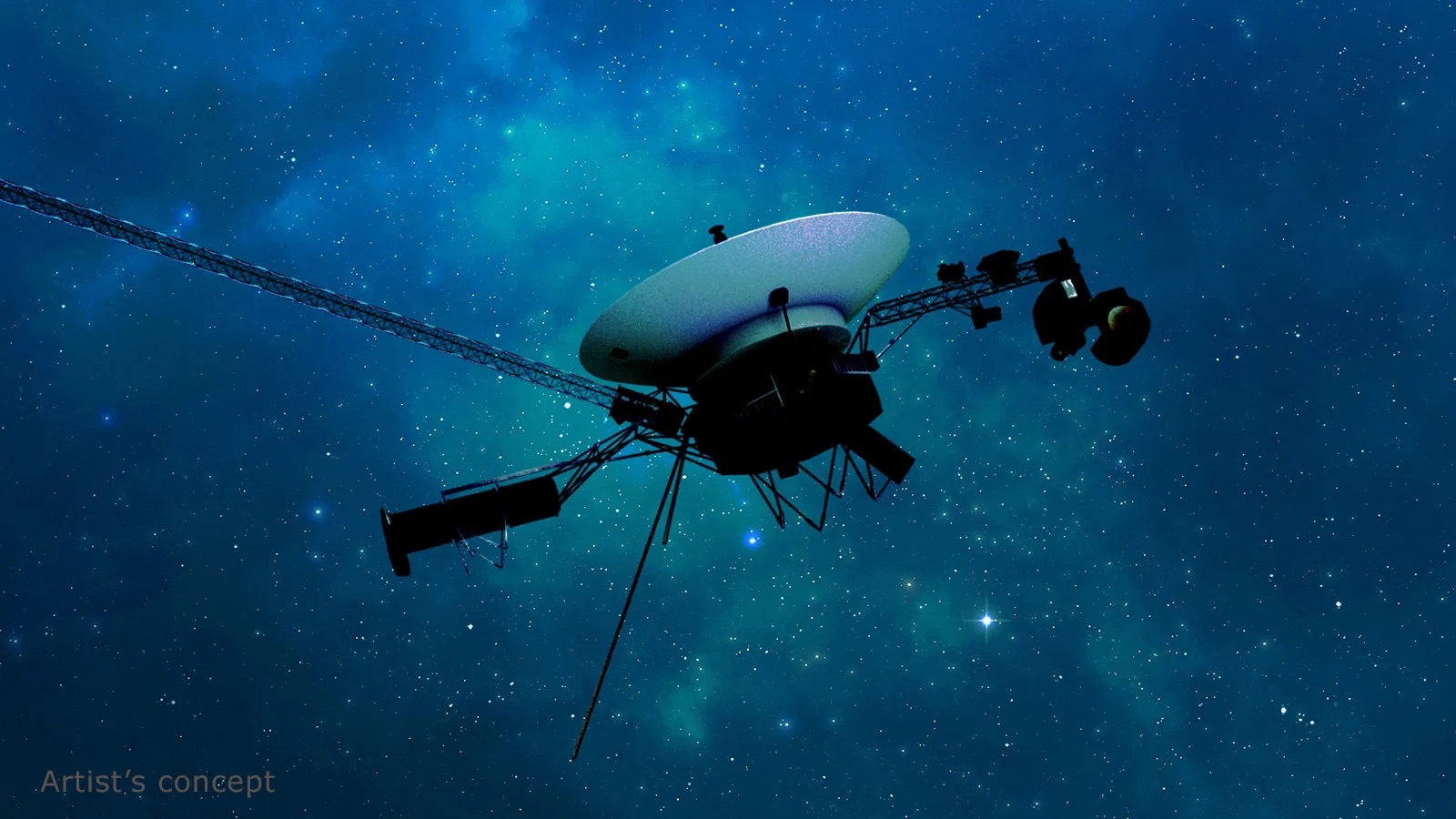
NASA’s Voyager Team Focuses on Software Patch, Thrusters

NASA Mission Update: Voyager 2 Communications Pause
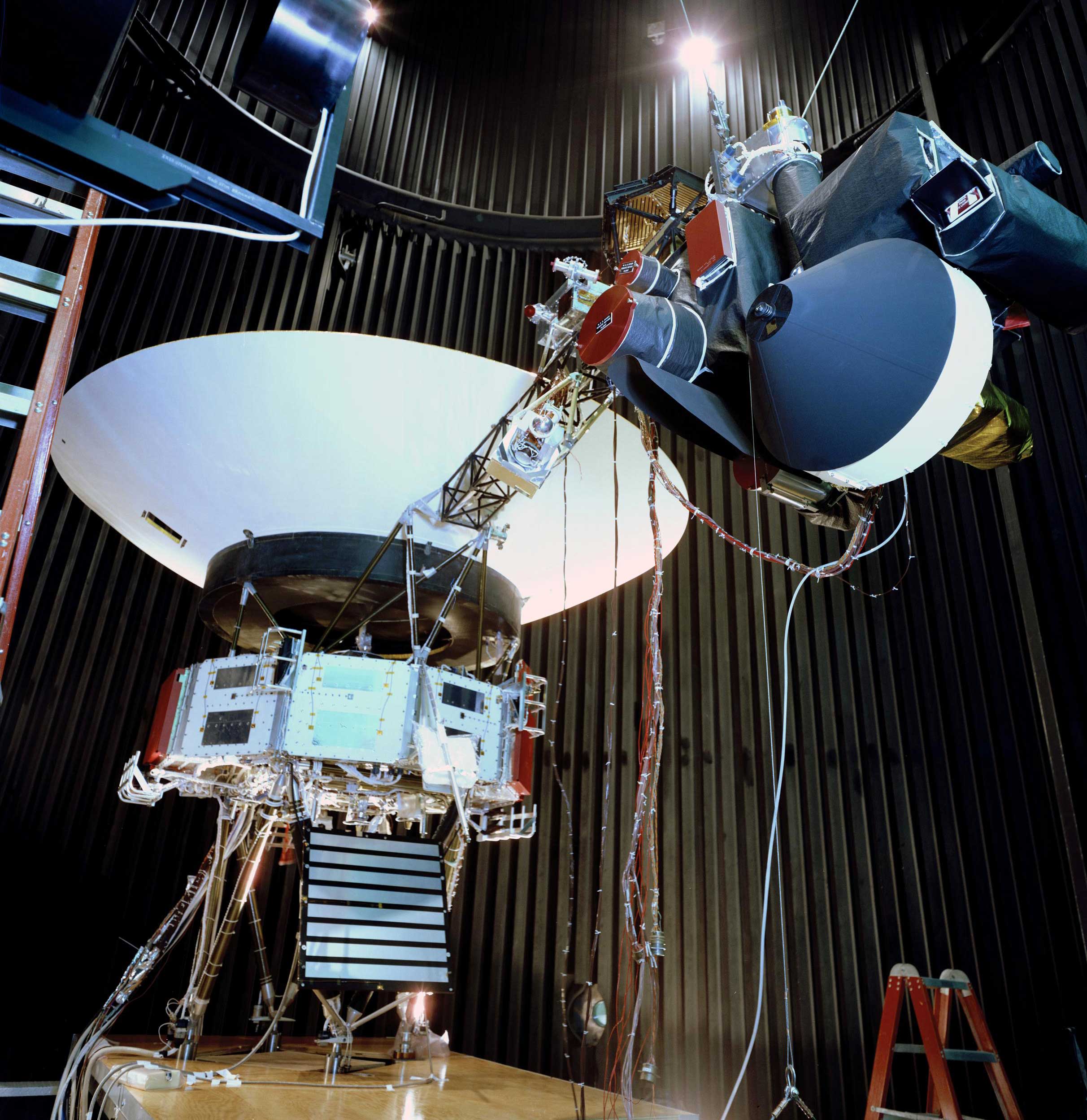
NASA's Voyager Will Do More Science With New Power Strategy
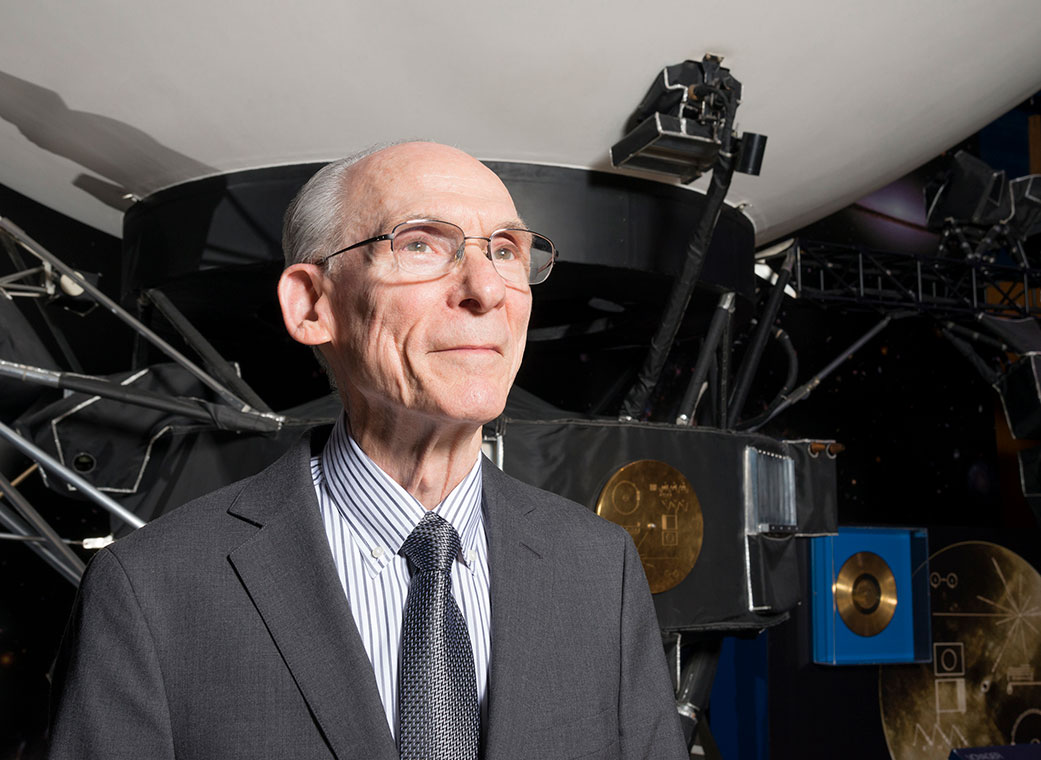
Edward Stone Retires After 50 Years as NASA Voyager's Project Scientist
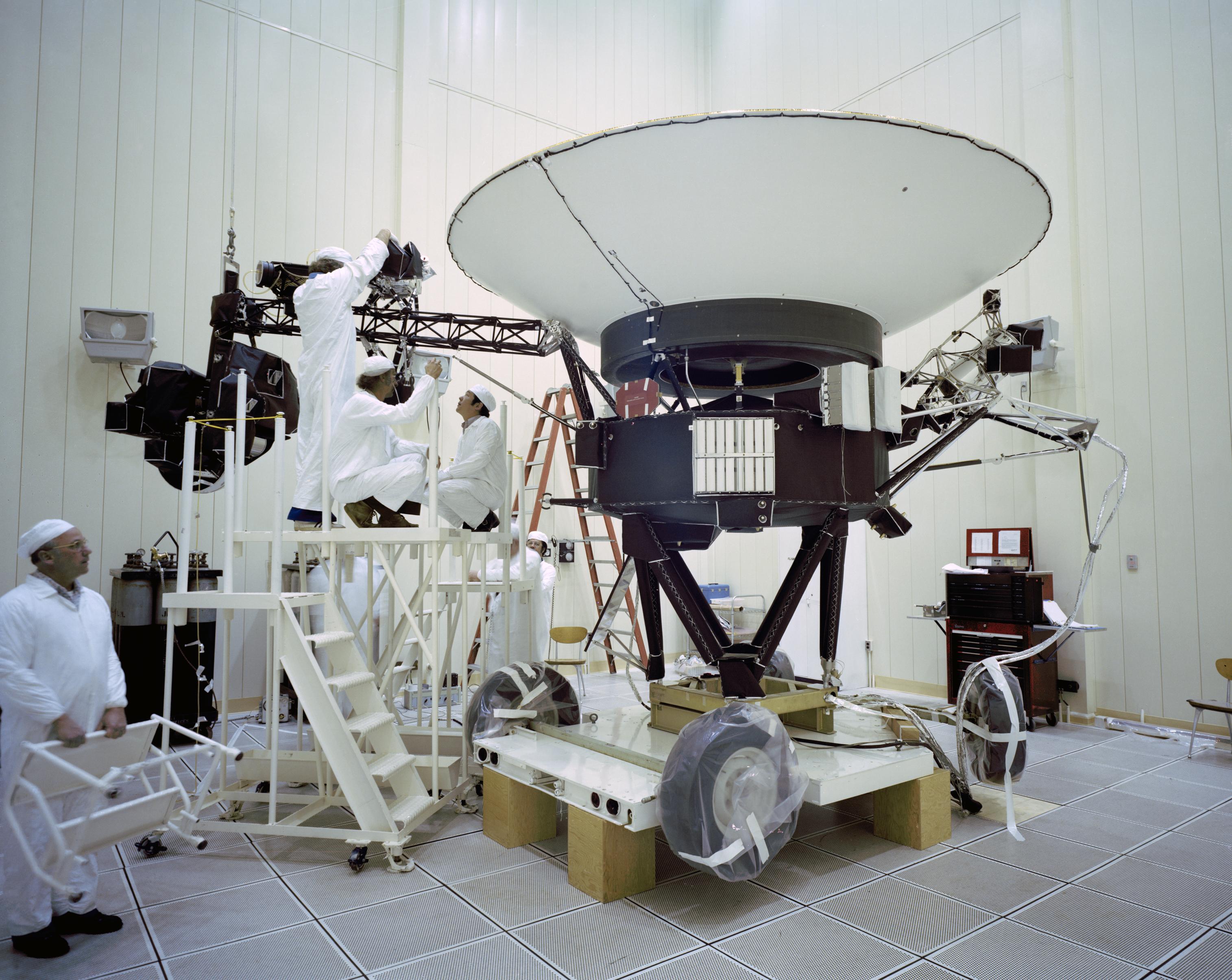
Voyager, NASA's Longest-Lived Mission, Logs 45 Years in Space
Voyager 1 distance from earth, voyager 1 distance from sun, voyager 1 one-way light time, voyager 1 cosmic ray data, voyager 2 distance from the earth, voyager 2 distance from the sun, voyager 2 one-way light time, voyager 2 cosmic ray data, what's happening now.
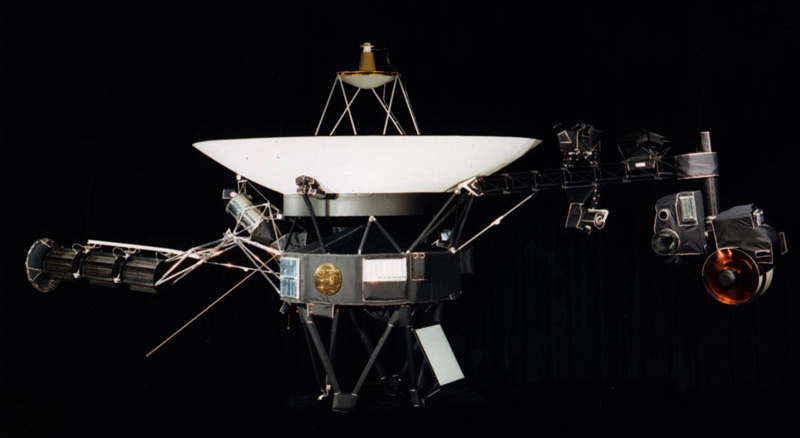
Since November 2023, NASA’s Voyager 1 spacecraft has been sending a steady radio signal to Earth, but the signal does not contain usable data.
Engineers are working to resolve an issue with one of Voyager 1’s three onboard computers, called the flight data system (FDS).
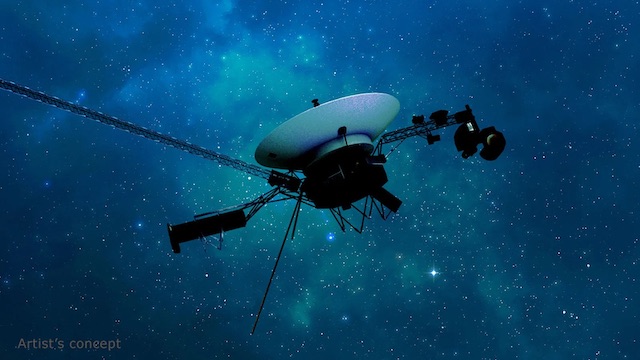
The efforts should help extend the lifetimes of the agency's interstellar explorers.

Download the Voyager 40th Anniversary posters.
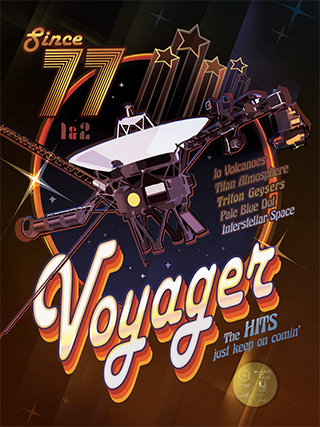
Voyager, NASA’s Longest-Lived Mission, Logs 45 Years in Space

This archival image taken at NASA’s Jet Propulsion Laboratory on March 23, 1977, shows engineers preparing the Voyager 2 spacecraft ahead of its launch later that year.
Launched in 1977, the twin Voyager probes are NASA’s longest-operating mission and the only spacecraft ever to explore interstellar space.
NASA’s twin Voyager probes have become, in some ways, time capsules of their era: They each carry an eight-track tape player for recording data, they have about 3 million times less memory than modern cellphones, and they transmit data about 38,000 times slower than a 5G internet connection.
Yet the Voyagers remain on the cutting edge of space exploration. Managed and operated by NASA’s Jet Propulsion Laboratory in Southern California, they are the only probes to ever explore interstellar space – the galactic ocean that our Sun and its planets travel through.
The Sun and the planets reside in the heliosphere, a protective bubble created by the Sun’s magnetic field and the outward flow of solar wind (charged particles from the Sun). Researchers – some of them younger than the two distant spacecraft – are combining Voyager’s observations with data from newer missions to get a more complete picture of our Sun and how the heliosphere interacts with interstellar space.
NASA’s Solar System Interactive lets users see where the Voyagers are right now relative to the planets, the Sun, and other spacecraft. View it yourself here . Credit: NASA/JPL-Caltech
“The heliophysics mission fleet provides invaluable insights into our Sun, from understanding the corona or the outermost part of the Sun’s atmosphere, to examining the Sun’s impacts throughout the solar system, including here on Earth, in our atmosphere, and on into interstellar space,” said Nicola Fox, director of the Heliophysics Division at NASA Headquarters in Washington. “Over the last 45 years, the Voyager missions have been integral in providing this knowledge and have helped change our understanding of the Sun and its influence in ways no other spacecraft can.”
The Voyagers are also ambassadors, each carrying a golden record containing images of life on Earth, diagrams of basic scientific principles, and audio that includes sounds from nature, greetings in multiple languages, and music. The gold-coated records serve as a cosmic “message in a bottle” for anyone who might encounter the space probes. At the rate gold decays in space and is eroded by cosmic radiation, the records will last more than a billion years.
45 Years of Voyager I and II
Launched in 1977, NASA’s twin Voyager spacecraft inspired the world with pioneering visits to Jupiter, Saturn, Uranus, and Neptune. Their journey continues 45 years later as both probes explore interstellar space, the region outside the protective heliosphere created by our Sun. Researchers – some younger than the spacecraft – are now using Voyager data to solve mysteries of our solar system and beyond.

This archival photo shows engineers working on vibration acoustics and pyro shock testing of NASA’s Voyager on Nov. 18, 1976. Credit: NASA/JPL-Caltech

NASA’s Voyager 1 acquired this image of a volcanic explosion on Io on March 4, 1979, about 11 hours before the spacecraft’s closest approach to the moon of Jupiter.

Neptune’s green-blue atmosphere was shown in greater detail than ever before in this image from NASA’s Voyager 2 as the spacecraft rapidly approached its encounter with the giant planet in August 1989.

This updated version of the iconic "Pale Blue Dot" image taken by the Voyager 1 spacecraft uses modern image-processing software and techniques to revisit the well-known Voyager view while attempting to respect the original data and intent of those who planned the images.

This illustrated graphic was made to mark Voyager 1’s entry into interstellar space in 2012. It puts solar system distances in perspective, with the scale bar in astronomical units and each set distance beyond 1 AU (the average distance between the Sun and Earth) representing 10 times the previous distance.

This graphic highlights some of the Voyager mission’s key accomplishments. Credit: NASA/JPL-Caltech Full image details

This graphic provides some of the mission’s key statistics from 2018, when NASA’s Voyager 2 probe exited the heliosphere. Credit: NASA/JPL-Caltech Full image details
Beyond Expectations
Voyager 2 launched on Aug. 20, 1977, quickly followed by Voyager 1 on Sept. 5. Both probes traveled to Jupiter and Saturn, with Voyager 1 moving faster and reaching them first. Together, the probes unveiled much about the solar system’s two largest planets and their moons. Voyager 2 also became the first and only spacecraft to fly close to Uranus (in 1986) and Neptune (in 1989), offering humanity remarkable views of – and insights into – these distant worlds.
While Voyager 2 was conducting these flybys, Voyager 1 headed toward the boundary of the heliosphere. Upon exiting it in 2012 , Voyager 1 discovered that the heliosphere blocks 70% of cosmic rays, or energetic particles created by exploding stars. Voyager 2, after completing its planetary explorations, continued to the heliosphere boundary, exiting in 2018 . The twin spacecraft’s combined data from this region has challenged previous theories about the exact shape of the heliosphere.

Voyager 1 and 2 have accomplished a lot since they launched in 1977. This infographic highlights the mission’s major milestones, including visiting the four outer planets and exiting the heliosphere, or the protective bubble of magnetic fields and particles created by the Sun.
“Today, as both Voyagers explore interstellar space, they are providing humanity with observations of uncharted territory,” said Linda Spilker, Voyager’s deputy project scientist at JPL. “This is the first time we’ve been able to directly study how a star, our Sun, interacts with the particles and magnetic fields outside our heliosphere, helping scientists understand the local neighborhood between the stars, upending some of the theories about this region, and providing key information for future missions.”
The Long Journey
Over the years, the Voyager team has grown accustomed to surmounting challenges that come with operating such mature spacecraft, sometimes calling upon retired colleagues for their expertise or digging through documents written decades ago.
Each Voyager is powered by a radioisotope thermoelectric generator containing plutonium, which gives off heat that is converted to electricity. As the plutonium decays, the heat output decreases and the Voyagers lose electricity. To compensate , the team turned off all nonessential systems and some once considered essential, including heaters that protect the still-operating instruments from the frigid temperatures of space. All five of the instruments that have had their heaters turned off since 2019 are still working, despite being well below the lowest temperatures they were ever tested at.
Get the Latest JPL News
Recently, Voyager 1 began experiencing an issue that caused status information about one of its onboard systems to become garbled. Despite this, the system and spacecraft otherwise continue to operate normally, suggesting the problem is with the production of the status data, not the system itself. The probe is still sending back science observations while the engineering team tries to fix the problem or find a way to work around it.
“The Voyagers have continued to make amazing discoveries, inspiring a new generation of scientists and engineers,” said Suzanne Dodd, project manager for Voyager at JPL. “We don’t know how long the mission will continue, but we can be sure that the spacecraft will provide even more scientific surprises as they travel farther away from the Earth.”
More About the Mission
A division of Caltech in Pasadena, JPL built and operates the Voyager spacecraft. The Voyager missions are a part of the NASA Heliophysics System Observatory, sponsored by the Heliophysics Division of the Science Mission Directorate in Washington.
For more information about the Voyager spacecraft, visit:
https://www.nasa.gov/voyager
News Media Contact
Calla Cofield
Jet Propulsion Laboratory, Pasadena, Calif.
626-808-2469
NASA’s Voyager 1 Is Glitching, Sending Nonsense From Interstellar Space
The aging spacecraft, launched in 1977, is transmitting a gibberish pattern of ones and zeros back to Earth
/https://tf-cmsv2-smithsonianmag-media.s3.amazonaws.com/accounts/headshot/MargaretOsborne.png)
Margaret Osborne
Daily Correspondent
:focal(768x432:769x433)/https://tf-cmsv2-smithsonianmag-media.s3.amazonaws.com/filer_public/13/a4/13a47049-e0ed-4339-b21b-a4026a1a9a4d/voyager-1536x864.png)
NASA’s Voyager 1 probe is experiencing a glitch that’s causing it to send a repeating, gibberish pattern of ones and zeroes back to Earth, the agency announced this week. The spacecraft is still able to receive and execute commands sent to it, but it’s unable to transmit back science or engineering data.
After ruling out other possibilities, the Voyager team determined the spacecraft’s issues stem from one of its three computers, called the flight data system (FDS). Last weekend, engineers tried to restart the FDS to see whether they could resolve the problem, but the probe still isn’t returning usable data, according to NASA.
Launched in 1977, Voyager 1 and its twin spacecraft Voyager 2 are NASA’s longest-operating mission. They are the only probes to ever explore interstellar space , or the vast area between stars. The spacecraft were initially launched to study Jupiter and Saturn, and they were only intended to last five years . But after making a series of discoveries—including spotting active volcanoes on Jupiter’s moon Io—NASA extended their mission. Both spacecraft carry a “ golden record ,” a 12-inch, gold-plated, copper disk that contains sounds and images to represent humankind in case any extraterrestrials ever encounter them.
My twin Voyager 1 is having a bit of trouble with its Flight Data System, but our team is on it! Details from @NASAJPL below. -V2 https://t.co/DRnxCzYLv5 — NASA Voyager (@NASAVoyager) December 12, 2023
By today’s standards, the technology aboard the Voyager crafts is ancient. Their computers only have 69.63 kilobytes of memory —about enough to store an average jpeg file. To make room for new observations, they must erase data after sending it to Earth.
“The Voyager computers have less memory than the key fob that opens your car door,” Linda Spilker , a planetary scientist who started working on the Voyager missions in 1977, told Scientific American ’s Tim Folger last year.
But the simple, yet hardy design of the Voyagers has contributed to their longevity and allowed them to hop between missions to collect valuable data. Still, both aging spacecraft have experienced glitches. Over the summer, a human error caused Voyager 2’s antenna to tilt two degrees away from Earth , leading researchers to lose contact with the craft for more than a week before its functions returned to normal. In 2022, an issue in the attitude articulation and control system (AACS) of Voyager 1 caused it to send “garbled information about its health and activities to mission controllers, despite operating normally,” per NASA . Engineers were eventually able to solve the glitch.
Right now, Voyager 1 is hurtling through space about 15 billion miles from Earth and Voyager 2 is more than 12.6 billion miles away. Because the spacecraft are so distant, commands from mission controllers take 22.5 hours to reach Voyager 1. This means it takes 45 hours to determine whether a command to the spacecraft has had the intended outcome. NASA says it could take several weeks to develop a new plan to fix the current FDS problem.
“Finding solutions to challenges the probes encounter often entails consulting original, decades-old documents written by engineers who didn’t anticipate the issues that are arising today,” NASA says in its statement. “As a result, it takes time for the team to understand how a new command will affect the spacecraft’s operations in order to avoid unintended consequences.”
Calla Cofield, a media relations specialist at NASA’s Jet Propulsion Laboratory, which manages the mission, tells CNN ’s Ashley Strickland engineers are now working to find the underlying cause of the problem before figuring out next steps.
“The Voyagers are performing far, far past their prime missions and longer than any other spacecraft in history,” Cofield tells the publication. “So, while the engineering team is working hard to keep them alive, we also fully expect issues to arise.”
Get the latest stories in your inbox every weekday.
/https://tf-cmsv2-smithsonianmag-media.s3.amazonaws.com/accounts/headshot/MargaretOsborne.png)
Margaret Osborne | | READ MORE
Margaret Osborne is a freelance journalist based in the southwestern U.S. Her work has appeared in the Sag Harbor Express and has aired on WSHU Public Radio.

NASA's Voyager 1 glitch has scientists sad yet hopeful: 'Voyager 2 is still going strong'
"If V1 didn't make it? I'd be very proud; the mission has far exceeded the designers' expectations."
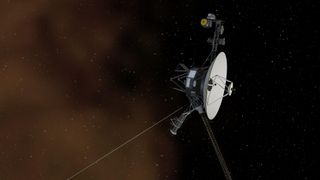
It has been several months since one of humanity's most accomplished spacecraft, the Voyager 1 probe, stopped talking to us — and though they remain somewhat hopeful, Voyager mission scientists are preparing for the worst: A goodbye.
"Sad and frustrated to have the spacecraft still working, but muted," Bruce Waggoner, the Voyager mission assurance manager, told Space.com of the group's present morale. "Even though we know the end could come at any time, it's never easy to lose a spacecraft. Especially one like Voyager 1 ."
For more than 45 years, this boxy machine with a pearly white, conical disk that sort of makes it look like a giant loudspeaker in space has been sending back stunning data. And I mean stunning. Not only is it the first craft to enter interstellar space (and therefore the farthest human-made object ever ), but it's also responsible for the identification of new Jovian moons, the discovery of yet another Saturnian ring and the solar system 's first and only "family portrait" that includes our eclectic gang of planets.
Related: NASA's interstellar Voyager 1 spacecraft isn't doing so well — here's what we know
It's also why we have the powerful Pale Blue Dot image that resurfaces on the internet every so often to remind us of our insignificance, or rather, significance, depending on your perspective. As Carl Sagan famously said, "Look again at that dot. That's here. That's home. That's us."
All this time, Voyager 1's cosmic letters have come through as computer messages often do, with 0's and 1's in precise patterns. Through a little bit of handiwork, such sequences can be translated into words the human mind can grasp — and scientists were always excited to open a new package of Voyager 1's binary code.
But then, in September of last year, the 0's and 1's stopped making sense .
Get the Space.com Newsletter
Breaking space news, the latest updates on rocket launches, skywatching events and more!
"Effectively, the call between the spacecraft and the Earth was still connected, but Voyager's 'voice' was replaced with a monotonous dial tone," the engineering team told Space.com.
Glitches have happened to Voyager 1 before, such as in 2022 when the probe's "attitude articulation and control system" exhibited some complications, but this one seems to be a doozy. The team still hasn't been able to fix it up, even months since the issue revealed itself, and is actually still searching for the crux of the problem.
So, is it time to call the final curtain on Voyager 1?
Well, to that end, scientists aren't quite sure yet. They remain working to remedy the situation — and quite diligently at that. "The team is tired because we have sustained a brisk pace for 3 months now, but we press on because we have ideas, and we have hope," Voyager mission engineer Kareem Badaruddin told Space.com.
However, what the team is sure of is that even if Voyager 1 succumbs to its wounds, the voyage is certainly not over.
"Don't forget Voyager 2 is still going strong! If we can keep one spacecraft going, the mission will continue," the crew said.

Voyager 2, which looks an awful lot like Voyager 1, actually launched 16 days before its counterpart, on Aug. 20, 1977. Voyager 1 just happened to get farther faster because it had a more efficient route out of the asteroid belt , officially overtaking its partner on Dec. 15, 1977 and later becoming the first probe to exit the gravitational influence of our solar system. Voyager 2 does have a bunch of achievements under its own belt, though, such as the fact that it's still the only spacecraft to have visited the outer planets, Uranus and Neptune .
Together, the Voyagers' joint mission was to simply explore — to plunge through the solar system, sweep across moons and planets beyond our own and try to go where no spacecraft has gone before.
"The Voyagers are the only spacecraft exploring interstellar space in-situ, and there are no missions that can gather this same data remotely," the team said.

They've surely been doing their duty, and hopefully, Voyager 1 has a little more juice left. But even if it doesn't, scientists wish to make clear that Voyager 2 shall continue to keep the torch lit.
Voyager 1's medical chart
In December of 2023 , the Voyager 1 team announced that the spacecraft's malfunction lies with its Flight Data System, or FDS, which is one of its onboard computers. There used to be a backup FDS, but that stopped working in 1981.
"Because of this issue, scientists are not receiving any science data or updates about the probe's health and status, including information that might reveal the source of the problem," the team explains.
Here's where perhaps the greatest trouble with this dilemma comes in. One of the FDS' main jobs is to basically keep Voyager 1's medical records up to date, then work with what's known as the telemetry modulation unit, or TMU, to tell ground control what's going on. But, because the FDS itself is the one malfunctioning, that medical record transmission can't happen.
"The team has attempted various 'simple' fixes, such as resetting the FDS to the state it was in before the issue began," the engineers said. "This week, the team will send more commands to the spacecraft to gather information about the status of the onboard systems. In the coming weeks, the team expects to start making more aggressive attempts to reset various systems that might influence the FDS."
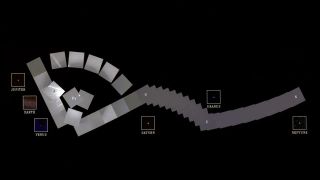
As of now, the team believes one possible cause of the issue has to do with the FDS' memory being corrupted by some mechanism that leads its binary code to sprout unintelligible patterns. However, engineers are also considering the fact that it could be a physical hardware failure. After all, Voyager 1's mechanics have been toiling away for multiple decades. Something could've simply broken down, hardware- or software-wise. In fact, scientists beamed some preemptive software patches to both of the Voyagers last year, from billions of miles away.
"The anomaly has caused us to study and learn about the spacecraft — much knowledge that was forgotten because it wasn't needed for many years has been recovered," Badaruddin said.
In a slightly more far-fetched scenario, the team also suggests it's possible some sort of energetic particle could've smashed into the spacecraft. If that happened, it might've created what's known as a "bit flip," which means a 0 in the code accidentally became a 1, or vice versa.
Still, the team is leaving all possibilities open. That's because, in truth, it might not even be the FDS that's causing problems in the first place. This theory is just the most likely one to stem from data the engineers currently have. "Because no engineering data is coming back, it's very hard to isolate the source of the problem" they said.
Moreover, in a bit of a non-silver lining, remember how Voyager 1's greatest achievement is being the first-ever probe to venture into interstellar space, where it's surrounded by untouched stardust and blankets of darkness? Yeah, it's extremely far away from us. And that means communicating with it takes a very (very) long time. Specifically, at the time of writing this article, Voyager 1 is more than 162 AUs away from Earth; one AU is equal to the distance between our planet and the sun . In total, it takes approximately 45 hours to complete one back-and-forth command with this spacecraft. Thus, "this process may take months," the team said.
To give you a silver lining, though, the scientists have confirmed that Voyager 1 is exhibiting what's known as a carrier tone, which runs along a wavelength that doesn't carry information but rather acts as a heartbeat. At the very least, we know it is alive.
"The spacecraft appears to be healthy other than the current issue. So if we can fix this, Voyager 1 should be able to continue its science mission," the team said. "But the Voyagers are already operating far, far beyond what anyone expected of them. We know the more time that goes by, the more issues are likely to arise. We’ll keep them going as long as we can, but we know they won't last forever."

— Voyager 2: An iconic spacecraft that's still exploring 45 years on
— NASA's interstellar Voyager probes get software updates beamed from 12 billion miles away
— NASA Voyager 2 spacecraft extends its interstellar science mission for 3 more years
"If V1 didn't make it? I'd be very proud; the mission has far exceeded the designers' expectations," Badaruddin said. "But really, that's hard to ponder because we still believe we can recover."
Alas, fingers crossed that Voyager 1 returns to its healthy self — but even if it doesn't, and is left alone to drift in space, we can be sure its legacy has already been firmly cemented in our books, in our hearts and in our history.
Then, it'll be up to you, Voyager 2.
Join our Space Forums to keep talking space on the latest missions, night sky and more! And if you have a news tip, correction or comment, let us know at: [email protected].

Monisha Ravisetti is Space.com's Astronomy Editor. She covers black holes, star explosions, gravitational waves, exoplanet discoveries and other enigmas hidden across the fabric of space and time. Previously, she was a science writer at CNET, and before that, reported for The Academic Times. Prior to becoming a writer, she was an immunology researcher at Weill Cornell Medical Center in New York. She graduated from New York University in 2018 with a B.A. in philosophy, physics and chemistry. She spends too much time playing online chess. Her favorite planet is Earth.
NASA's interstellar Voyager 1 spacecraft isn't doing so well — here's what we know
NASA's Voyager 1 probe in interstellar space can't phone home (again) due to glitch
Total solar eclipse 2024: Live updates
- dziner88 Mmmm....I see the premise for the original Star Trek movie. 😉 Reply
- View All 1 Comment
Most Popular
By Mike Wall April 07, 2024
By Jeff Spry April 07, 2024
By Sharmila Kuthunur April 07, 2024
By Robert Lea April 07, 2024
By Tariq Malik April 06, 2024
By Space.com Staff April 06, 2024
By Joe Rao April 06, 2024
By Josh Dinner April 06, 2024
By Mike Wall April 06, 2024
- 2 Total solar eclipse 2024 thrills millions across North America (video, photos)
- 3 Total solar eclipse 2024 has begun and here are the first views!
- 4 Total solar eclipse 2024: Pictures from around the web
- 5 In Indiana, the best spot to see the 2024 solar eclipse is wherever you are
Voyager 1 having trouble phoning home as decades-old craft travels through interstellar space
Resolving the issue comes with certain complicating factors, such as the age of voyager and the time commands sent from earth take to reach the spacecraft..
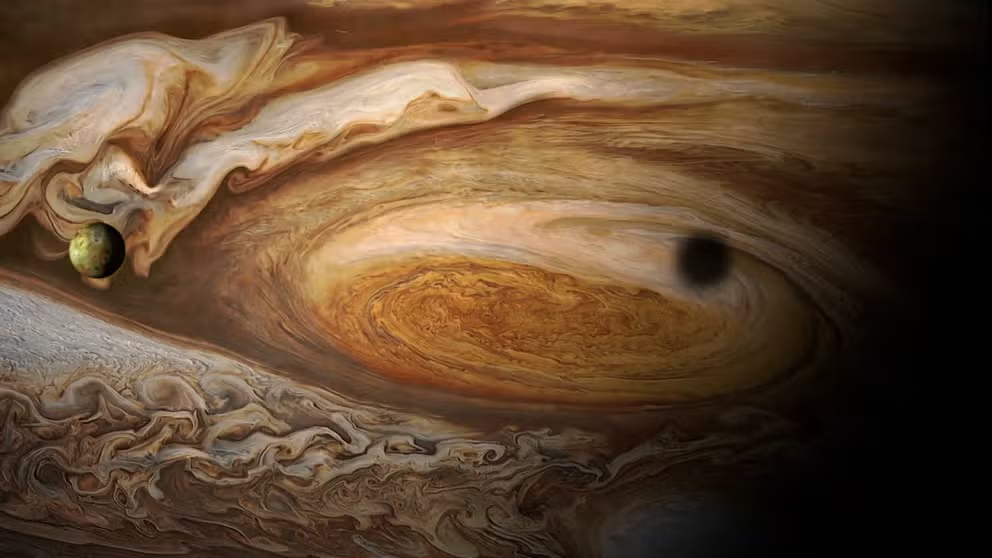
FILE: Exploring Jupiter's Great Red Spot—the biggest storm in our solar system
Famous for its Great Red Spot, Jupiter is a gas giant with some of the most fascinating weather in the solar system.
NASA announced this week that the Voyager 1 spacecraft has been unable to send science and engineering data to Earth.
For more than 45 years, the spacecraft has been flying away from Earth, reaching far beyond the planets and transmitting its findings back home.
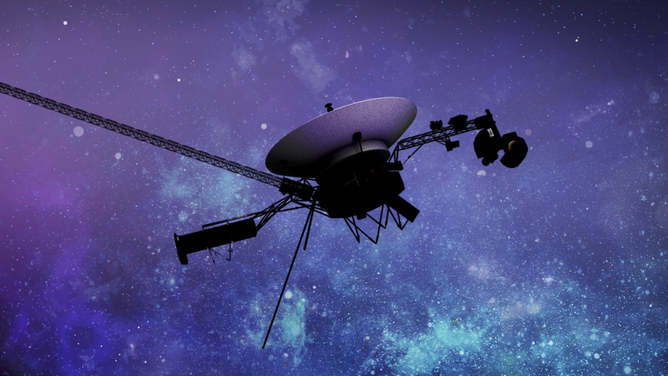
Artist’s illustration of one of the Voyager spacecraft.
(Caltech / NASA-JPL / NASA)
The technical hiccup preventing recent transmissions involves two components on Voyager 1: its three onboard computers, known as the flight data system (FDS), and one of the spacecraft’s subsystems, known as the telemetry modulation unit (TMU).
The FDS collects data gathered by the science instruments on board, along with data regarding the status of the spacecraft itself, according to NASA. This information is then taken by the TMU, which transmits it back to Earth in various combinations of binary code.
However, the transmissions sent by the TMU recently are a repeating pattern of the binary code, NASA said.
What the Voyager team is doing to resolve the issue
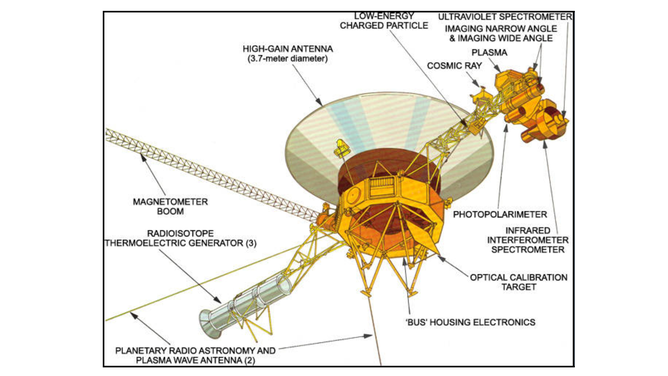
A schematic showing the science experiments on Voyager.
(NASA / NASA)
The Voyager team has come to the conclusion that the source of the issue is the FDS. To troubleshoot the issue, NASA said the Voyager team attempted to restart the FDS last weekend in hopes of returning it to a state prior to when the issue began.
The restart did not end up resolving the issue, the agency noted.
VOYAGER 1 CONTINUES TO OFFER NEW MYSTERIES FROM INTERSTELLAR SPACE
Hurdles that come with troubleshooting Voyager 1
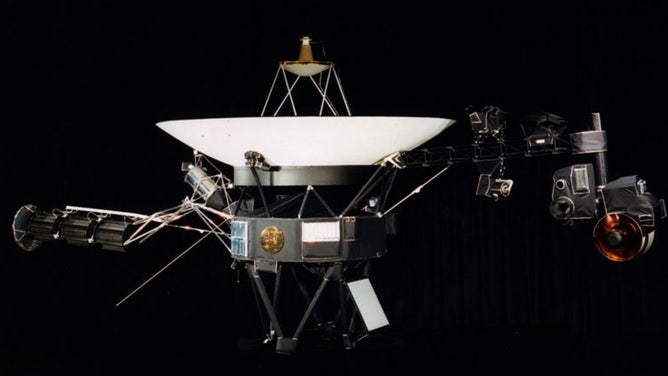
Image of Voyager.
Resolving the issue comes with certain complicating factors, according to NASA.
One of which involves the fact that Voyager 1 was launched more than 45 years ago, the agency said. This means that scientists trying to fix the current issue are having to consult decades-old documents written by engineers who hadn’t foreseen issues such as the one seen today.
Without this guidance, the present-day Voyager team is having to take additional time to understand how new commands sent to the spacecraft may impact its operations.
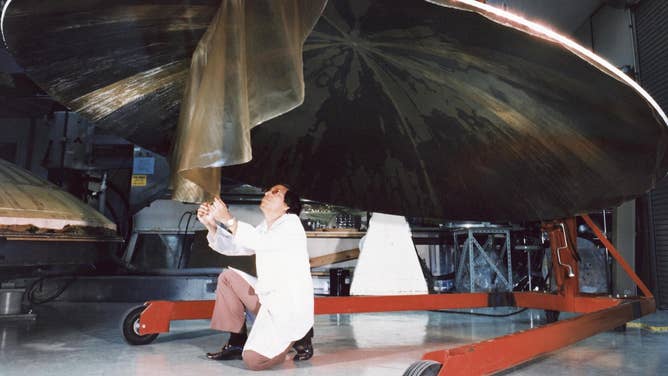
Archival image showing an engineer on the Voyager team working on the construction of the dish-shaped Voyager antenna. July 9, 1976.
(NASA/JPL-Caltech, NASA/JPL-Caltech Photojournal / NASA)
Another complicating factor involves how long commands take to reach the spacecraft. According to NASA, commands sent by mission controllers on Earth take 22.5 hours to reach Voyager 1, which is currently more than 15 billion miles from Earth.
NASA'S VOYAGERS GET SOFTWARE UPGRADES TO PROLONG LIVES OF 1970S SPACECRAFT
This delay translates to engineers waiting 45 hours to see the outcome of the command they sent.
The historic Voyager mission
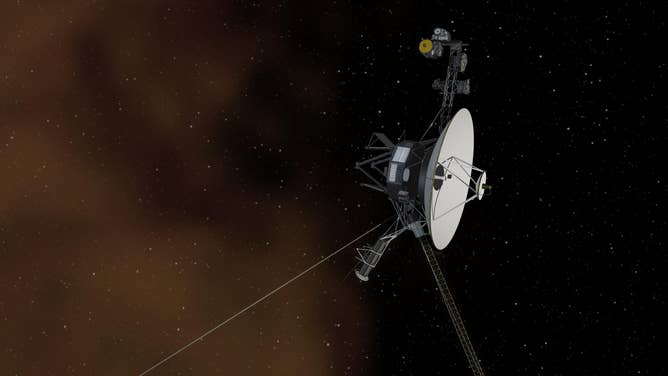
An artist's concept of Voyager 1 entering interstellar space, or the space between the stars. Interstellar space is filled with plasma, ionized gas (shown as a brownish haze here), that was cast off by giant stars millions of years ago, NASA said.
Voyager 1 and its twin Voyager 2 were launched in 1977 with a primary mission to explore Jupiter and Saturn. After reaching the two gas giants between 1979 and 1981, NASA said the mission was extended and expanded to incorporate encounters of all the gas giants and has since flown beyond the realm of the planets.
VOYAGER 1 CONTINUES ZOOMING THROUGH INTERSTELLAR SPACE 45 YEARS AFTER ITS LAUNCH
On Aug. 25, 2012, Voyager 1 became the first human-made object to reach interstellar space and enter an area beyond the Sun’s realm of plasma influence, according to NASA. In doing so, it became the most distant human-made object. Voyager 2 has not reached interstellar space nor left the Sun’s realm of plasma influence.

A artist's concept showing the general locations of Voyager 1 (object in brownish-orange region) and Voyager 2 (object in gray-blue region). The yellow dot is the Sun.
NASA noted that both Voyagers 1 and 2 carry an eight-track tape player for recording data. To compare how much data they can manage with modern technology, the spacecraft have approximately 3 million times less memory than modern cellphones, and they transmit data about 38,000 times more slowly than a 5G internet connection.
HOW TO WATCH FOX WEATHER
The spacecraft were originally built to last for five years, NASA said. After being in space for nearly 10 times that, Voyager has become NASA's longest-operational mission.
- Spaceflight

IMAGES
VIDEO
COMMENTS
CNN —. Engineers have sent a "poke" to the Voyager 1 probe and received a potentially encouraging response as they hope to fix a communication issue with the aging spacecraft that has ...
Both Voyager 1 and Voyager 2 have reached "Interstellar space" and each continue their unique journey through the Universe. In the NASA Eyes on the Solar System app, you can see the real spacecraft trajectories of the Voyagers, which are updated every five minutes. Distance and velocities are updated in real-time.
Caltech/NASA-JPL. 209. It's been four months since NASA's Voyager 1 spacecraft sent an intelligible signal back to Earth, and the problem has puzzled engineers tasked with supervising the probe ...
Voyager 1's distance from Earth complicates the troubleshooting effort. The one-way travel time for a radio signal to reach Voyager 1 from Earth is about 22.5 hours, meaning it takes roughly 45 ...
Voyager 1, already the most distant human-made object in the cosmos, reaches 100 astronomical units from the sun on Tuesday. That means the spacecraft, which launched three decades ago, will be 100 times more distant from the sun than Earth is. ... News updates on Voyager 2's encounter with Neptune will be available to the public during late ...
Voyager 1 currently sits around 15 billion miles (24 billion kilometers) from Earth, which means it takes 22.5 hours to receive a radio signal from it — and another 22.5 hours for the spacecraft ...
In 2023, humanity's pioneering space mission, Voyager 1, stopped sending understandable data back to Earth. Now, NASA engineers may be closer to discovering the source of the issue.
Voyager 1 is literally venturing into the great unknown and is approaching interstellar space. Traveling at a speed of about one million miles per day, Voyager 1 could cross into interstellar space within the next 10 years. "Interstellar space is filled with material ejected by explosions of nearby stars," Stone said.
NASA. Jun 06, 2013. RELEASE 12-416. WASHINGTON - NASA's Voyager 1 spacecraft has entered a new region at the far reaches of our solar system that scientists feel is the final area the spacecraft has to cross before reaching interstellar space. Scientists refer to this new region as a magnetic highway for charged particles because our sun ...
Jet Propulsion Laboratory, Pasadena, Calif. 818-354-0724. [email protected]. Dwayne Brown. 202-358-1726. [email protected]. 2012-381. NASA's Voyager 1 spacecraft has entered a new region at the far reaches of our solar system that scientists feel is the final area the spacecraft has to cross before reaching interstellar space.
Launched in 1977, Voyager 1 zipped past Saturn and Jupiter in 1979 and 1980 before flying out into interstellar space in 2012. It is now recording the conditions outside of the sun's protective ...
Since late 2023, engineers have been trying to get the Voyager spacecraft back online. On Dec. 12, 2023, NASA shared some worrisome news about Voyager 1, the first probe to walk away from our ...
Its flyby of the Saturn system in November 1979 was as spectacular as its previous encounter. Voyager 1 found five new moons, a ring system consisting of thousands of bands, wedge-shaped transient clouds of tiny particles in the B ring that scientists called "spokes," a new ring (the "G-ring"), and "shepherding" satellites on either side of the F-ring—satellites that keep the ...
The twin Voyager 1 and 2 spacecraft are exploring where nothing from Earth has flown before. Continuing on their more-than-45-year journey since their 1977 launches, they each are much farther away from Earth and the Sun than Pluto. ... Voyager. Home. Voyager 1. Voyager 2. News. Mission Updates. Voyager Stories. News Media Contacts. Mission ...
Voyager 2, now 12.7 billion miles from Earth, is functioning normally. However, a computer problem aboard Voyager 1 on Nov. 14, 2023, corrupted the stream of science and engineering data the craft ...
Voyager 1 has been traveling through space since 1977, and some scientists hoped it could keep sending back science data for 50 years. But a serious glitch has put that milestone in jeopardy.
They mystery of its junk data has been solved, NASA says.(Image credit: NASA) NASA's Voyager 1 probe is finally making sense again in interstellar space. After months of sending junk data about ...
This is a real-time indicator of Voyager 1's distance from Earth in astronomical units (AU) and either miles (mi) or kilometers (km). Note: Because Earth moves around the sun faster than Voyager 1 is speeding away from the inner solar system, the distance between Earth and the spacecraft actually decreases at certain times of year.
Beyond Expectations. Voyager 2 launched on Aug. 20, 1977, quickly followed by Voyager 1 on Sept. 5. Both probes traveled to Jupiter and Saturn, with Voyager 1 moving faster and reaching them first. Together, the probes unveiled much about the solar system's two largest planets and their moons.
The glitch paused Voyager 1's science work and kicked off a long-distance diagnosis process. The team traced the issue to the flight data subsystem, a computer that talks to the spacecraft's ...
Right now, Voyager 1 is hurtling through space about 15 billion miles from Earth and Voyager 2 is more than 12.6 billion miles away. Because the spacecraft are so distant, commands from mission ...
Launched in 1977, NASA's Voyager 1 became the first spacecraft to travel beyond our solar system into interstellar space in 2012. Get the latest tech news How to check Is Temu legit?
Poster in celebration of Voyager's interstellar journey. (Image credit: NASA) Voyager 2, which looks an awful lot like Voyager 1, actually launched 16 days before its counterpart, on Aug. 20, 1977 ...
NASA announced this week that the Voyager 1 spacecraft has been unable to send science and engineering data to Earth. For more than 45 years, the spacecraft has been flying away from Earth, reaching far beyond the planets and transmitting its findings back home. Artist's illustration of one of the Voyager spacecraft. (Caltech / NASA-JPL / NASA)